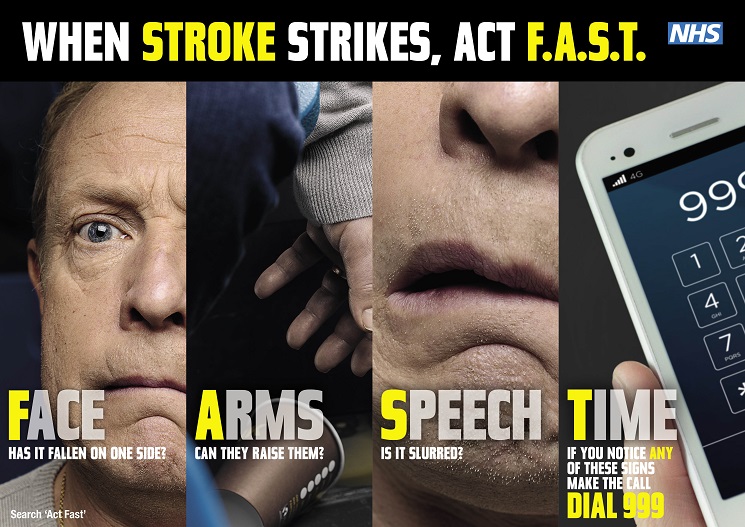Every 45 seconds someone suffers a stroke in the USA.
A stroke or “brain attack” occurs when a blood vessel (a tube through which the blood moves through the body) breaks or a blood clot blocks an artery (a blood vessel that carries blood from the heart to the body), interrupting blood flow to an area of the brain. When either of these things happen, brain cells begin to die and brain damage occurs. When brain cells die during a stroke, abilities controlled by that area of the brain are lost. These abilities include speech, movement and memory. How a stroke patient is affected depends on where the stroke occurs in the brain and how much the brain is damaged.
Symptoms of a Stroke
Seek immediate medical treatment if you experience any one of these stroke symptom warnings:
- Numbness or weakness of your face, arm or leg, especially on one side of the body
- Sudden confusion, trouble speaking or understanding
- Speech: Ask person to say “You can’t teach an old dog new tricks”
- Blurred, double or decreased vision in one or both eyes
- Sudden trouble walking, dizziness or loss of balance or coordination
- Sudden severe headache with no known cause
Myth vs. Reality:
Myth
- Stroke is unpreventable
- Stroke cannot be treated
- Stroke only strikes the elderly
- Stroke happens to the heart
- Recovery only happens for a few months following a stroke
Reality
- Stroke is largely preventable
- Stroke requires emergency treatment
- Stroke can happen to anyone
- Stroke is a “Brain Attack”
- Stroke recovery continues throughout life
Face, Arms, Speech, Time:

